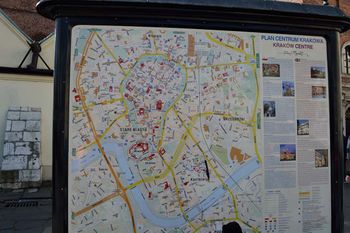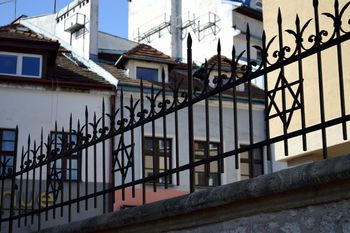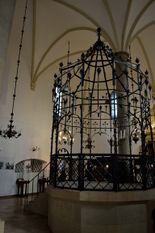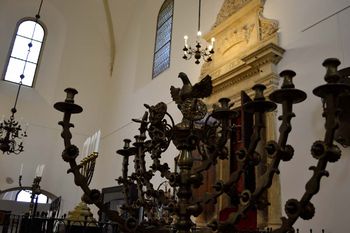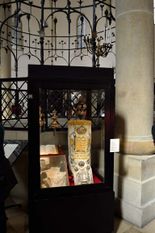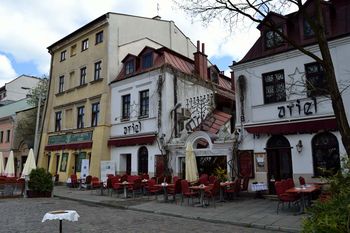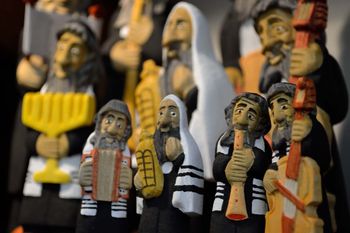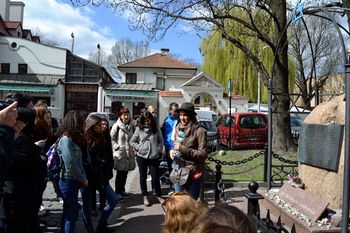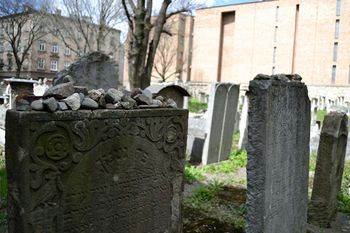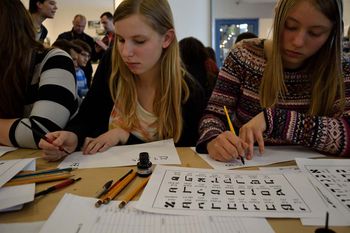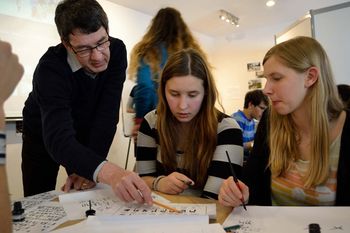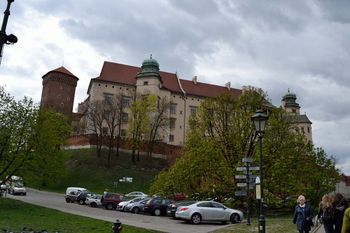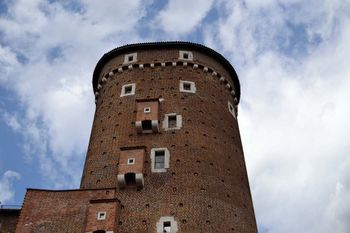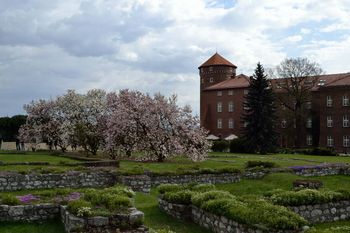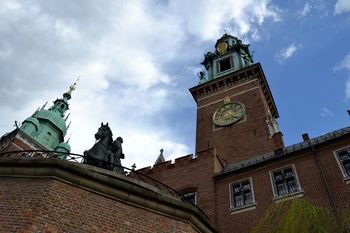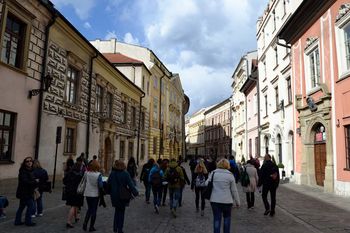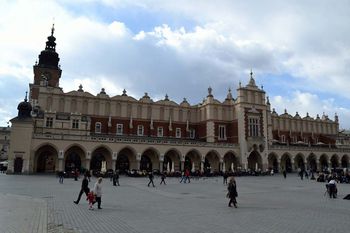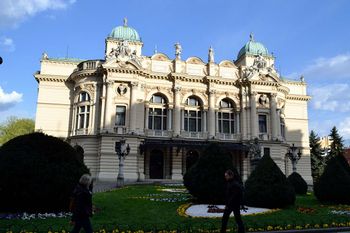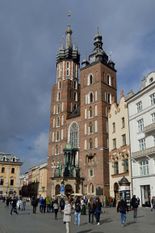Besuch in Krakau engl. Version
|
Visiting Krakau 5.30! 5.30 is far too early for most people. It is too early to get up easily and too late to stay awake the whole night. But it was 5:30 when we left Opatow for our destination of the day: Krakow. We arrived at the culture centre of Poland at 9 am after a 150 km long coach drive. Most of us used the driving time to relax a little bit. The first point on the agenda was a visit of the Jewish museum ‘Galicia’ in the district of Kazimierz. Kazimierz, which was founded by King Kazimierz the Great (1335), was used by the Jewish population as a place of refuge after the great fire of 1494. The Polish people thought that the Jewish community was responsible for that fire, so they had to leave Krakow and search for another place to stay. After the industrial revolution of the 19th century the city of Krakow grew rapidly. Thus even the small city of Kazimierz became a part of the city and was integrated. The importance of this place can be seen by the fact that after the Second World War and the Holocaust only few places in Europe can tell as the story of the Jewish people and how they lived before the war. And now we are standing in the middle of this historic place. Only one place, which is in such a good, historical condition, can be compared to Kazimierz. You can find it in the neighboring state of the Czech republic. It’s Prague ( the capital city of the Czech republic). Following the Jewish traces in Kazimierz our guide showed us the area which had been used as the scenery for the movie ‘Schindler’s list’. The most important landmark of Kazimierzis the old synagogue of the former village. The synagogue was reconstructed after the Second World War and is now used as a museum for Jewish life!!! in Krakow. During the visit of the former synagogue we learned a lot about the daily life of Jewish people in the district of ‘Kazimierzbefore the war. Apart from the festivals like Hanukah (Jewish people celebrate that God gave light to the Jewish people in a special way) or bar mitzvah we also learned a lot about the traditional ‘kosher’ cuisine of Polish Jewish people. On our little excursion through Kazimierz we visited alongside the museums synagogue and some sceneries from ‘Schindler’s list’, the actively used synagogue of Krakow with its very traditional cemetery. Our guided tour ended with the visit of a real ‘Kosher’ restaurant called Hamsa. In this restaurant we could actually try by our- selves how kosher cuisine tastes like. (In my opinion, it is very delicious. If you have the opportunity, try it out!). After the great lunch we participated in a special work shop; first we ate traditional Jewish food and then we spoke and wrote ‘Yiddish’. Yiddish, the official language of the Jewish people, has a lot of similarities to the German language. Therefore it was surprisingly easy for the German delegation to speak Yiddish correctly, but in terms of writing ‘Yiddish’ was very difficult for everybody, even for the Germans. Beginning with a totally different way of holding the nib and reproducing the totally different letters it was for all of us quite a challenge to write even our own names in ‘Yiddish’ correctly. Leaving the Jewish district after immersing a lot in the Jewish culture we headed on to explore worldly landmarks of Krakow. As with every good sightseeing tour through Krakow the visit of the castle ‘Wawel’ is an absolute must. Located on a small hill the castle enthroned over the city, and was the residence of the polish King for a long time. Now the castle allows visitors a beautiful view over the historical city of Krakow. You can find people from around the world there. Thus we had the great opportunity to interview some of them in small groups of 5 persons (we formed the groups so that there was one person from every delegation. We had people from Greece, Portugal, Rumania, Germany but unfortunately not from Poland). On our own we talked to people we met there and asked them a great number of questions about Jewish life in their home countries. For all of us it was a new experience to interview people in a foreign language and in a foreign country, of course, but everybody enjoyed it after a short warm up time. Finally, we carried out a lot of very interesting interviews and met nice and friendly people from all over Europe. Then we followed the main road from Wawel to the marketplace in Krakow where we passed some magnificent restored buildings, shining as they had never been destroyed. After a short historical crash course about the most important buildings in Krakow we had some free time to explore the city by ourselves. The last point on our agenda for this Tuesday was a traditional Klezmer concert in the glacia museum including a dinner. We all enjoyed the relaxed atmosphere of this concert after such an eventful day in Krakow and the day was finished harmonically there.
(Andreas Scherbach, Q11)
|
